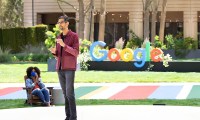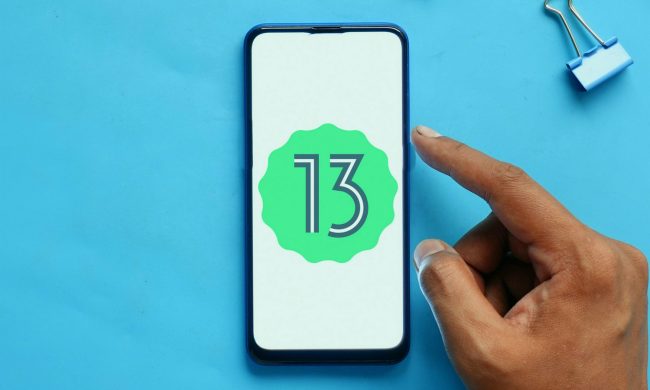
The first day of Google I/O (Input and Output) 2012 has come and gone. We’ve been rattling off news stories all day, but if you haven’t been glued to our feed, you may need a refresher. The big announcements on day one have been the new Nexus 7 tablet, Sergey Brin’s skydiving demonstration of Google Glasses, the Nexus Q music player, Android 4.1 (Jelly Bean), and the introduction of Google+ Events. Below, we’ve compiled links to more information about each of these.
Google I/O Day 1 coverage
- Nexus 7 tablet: Google unveiled its first tablet today. The Nexus 7 aims straight at the market that Amazon baited with the Kindle Fire, but kicks everything up a notch. The tablet runs on Android 4.1 and comes with a new interface and emphasis on Google Play. The interface appears to look more like the Galaxy Nexus, but with extra large icons and new media-rich widgets to better resemble the Kindle Fire and Nook Tablet. It has top-notch specs for a 7-inch including a quad-core Tegra 3 processor, 1GB of RAM and a nice 1280×800 pixel screen. Best of all, it clocks in at just $200 for the 8GB version and $250 for 16GB. You can order it now and it ships in mid July. (Also check out our Spec comparison: Nexus 7 vs Kindle Fire. Check out our full review of the Google Nexus 7.)
- Google Play gets new content: To help boost the stable of content sold on the Nexus 7 tablet (Google is competing with the Kindle Fire, remember), the Google Play store now sells magazines, TV shows, and movies as well as its current stable of music, books, and apps. Android users can now download a Google Magazines app, which sells subscriptions to magazines and individual issues. The YouTube video app now sells episodes of TV shows, entire seasons, and movies. Previously, it was a rental only shop.
- Android 4.1 (Jelly Bean): Android 4.0 (Ice Cream Sandwich) came out last December, but it’s already old news. Jelly Bean has a lot of small enhancements and thanks to “Project Butter,” it should run smoother on devices as well. Home screens are now easier to customize, notifications are much more robust, offline voice typing is enabled, and a new Siri competitor has emerged called “Google Now.” We look forward to trying it out but it appears to be a step up from Apple’s voice assistant in that it more accurately analyzes your history of behavior to better guess what you’re saying and what you want.
- Nexus Q social streaming media player: The Nexus Q is an odd beast. It’s technically a completely new type of gadget. It’s black and ball shaped with a processor (ARM) inside and a multicolored light up strip around it. In other words, it looks like a tiny Death Star with a light-up weakness trench. Or maybe a Thermal Detonator? Star Wars references aside, this device works by connecting to all of your other devices. You can hook up Android phones and tablets (with Android 4.1) to the Nexus Q and it will play their content on a television, through a computer, or through a speaker system. It will cost $300. You can order it now, and it should arrive in the next two to three weeks.
- Google+ Events: Google is attempting to hit Facebook where it hurts, again. With Google+ Events, you can now set up times and dates and events in Google+ (and Google Calendar) and manage parties and special occasions. One cool new feature is “Party mode,” which lets everyone at a party automatically upload their pictures to the Google+ event page.
- Google+ messaging and history: Google also stated that it’s going to unify its Hangouts, Google Talk, and G+ Messenger services into one and will open up API’s to help you integrate historical data from services like Twitter (no Facebook) into Google+. Hangouts will also get some new apps.
- Google Glasses skydives in: Halfway through Google+ chief Vic Gundotra’s speech, Google co-founder Sergey Brin rushed out on stage and interrupted. Vic later said he had been Taylor Swifted. Luckily, Brin had something special to show. Brin started a Live Google+ Hangout with a group of skydivers all wearing Google Glasses and we saw them jump out of a plane and land on top of the Moscone Center where the Google event was being held. After some biking, repelling, and other acrobats were also shown via Google Glasses Point-of-view, a pair of Glasses were delivered to Brin, who shared a few details about them and announced that I/O attendees could pre-order a prototype Project Glass testing unit for $1,500 if they wanted to live “on the bleeding edge.” Testing units will be delivered “early next year.” No details on a consumer launch were announced.
That does it for today. We’ll have more Google I/O coverage Thursday and Friday and update this article accordingly. Tomorrow’s Chrome keynote starts at 9:30am PT. For more sessions worth checking out, read our Google I/O session recommendations.
UPDATE 6/28/2012: Fixed the Google Glasses link.
UPDATE 6/28/2012: Added link to Google+ updates.



